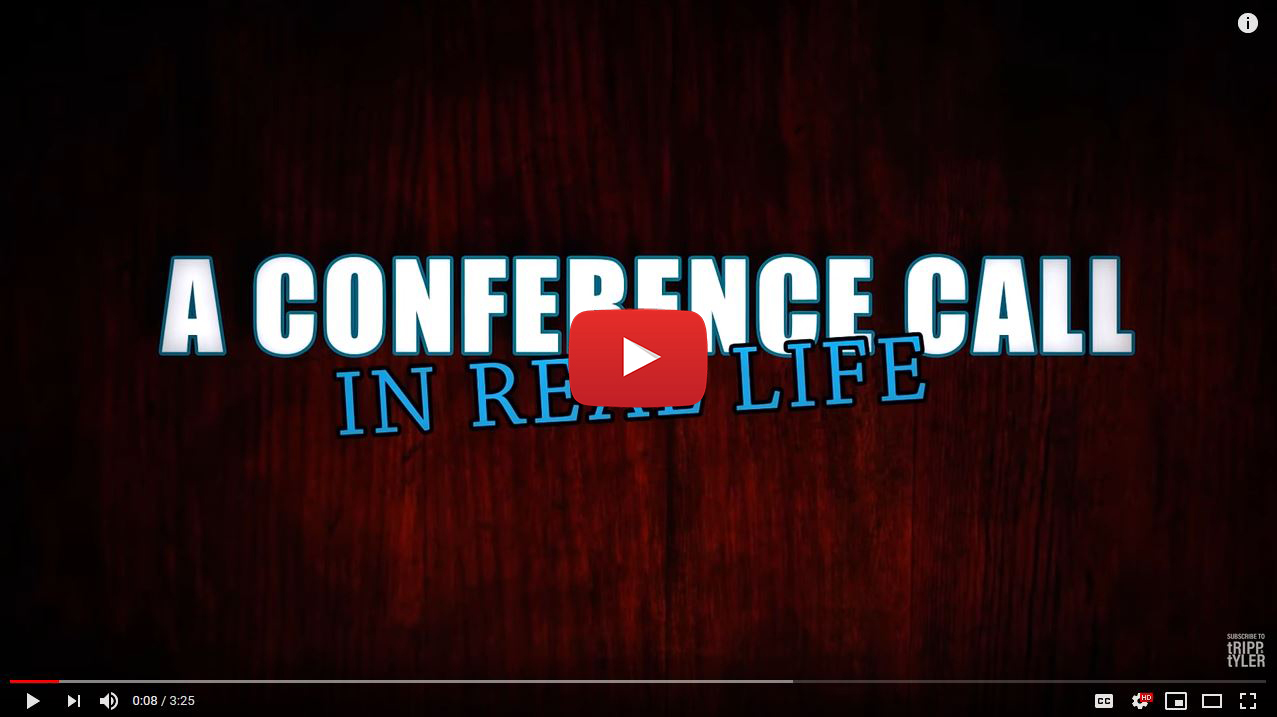Click below to watch this classic, A Conference Call in Real Life (3:25) and multiply it by many, many orders of magnitude. Our screens are now our daily life. Business conference calls and video meetings (not to mention virtual viewing parties, yoga classes, and cocktail gatherings) are all online.
The Wheels of Commerce
need to keep turning. We will get through this, and businesses need to continue doing what they’re doing to be ready to jump start our economy. So how can you best engage your colleagues as we all Work From Home?
Good News; Bad News
We’re connecting and we’re not alone. The tough part is that screens require a different style of communicating. You no longer have the Power of Personality which you naturally utilize when interacting live in-person.
Be Efficient with Kindness
Now that our homes have become our workplaces, our multiple responsibilities and worries are interwoven. The greatest kindness you can provide is to be efficient in your communications. Help others help you to get the job done.
Three Fresh Ideas
Assuming you’ve taken care of the basics (getting the laundry out of view, etc.), here are ideas to adapt that will improve your screen time.
1. Have We Started?
Right upfront clarify what type of meeting this is: Update to keep us all informed? Specific decision-making with consensus needed on question A? Clarify how their time will be used (NOT “the agenda”).
Soft opening: Before we begin, let’s take 5 minutes to do a quick catch up and we will start our content at 1:05. This is happening anyhow, so acknowledge it and take ownership of it. This is everyone settling in with coffee/water, being clear why they’re there, making sure they have the right materials, introductions as necessary, personal updates.
Hard opening: Q4 deliverables: can we accomplish our current plan, how soon can we figure this out, and what 3 next steps can we identify today? This is your headline. Be bold. Dive right in and set the intention cleanly, simply and directly. No qualifier words (like, some, maybe, just, quickly, sort of, kinda, think).
2. Who’s Here?
Think of how many calls and meetings you sat through last week! It’s very hard for audiences to stay engaged, especially with so much else around us crying for attention. Use call-outs by name to keep your audiences with you, either individuals or geographies:
Jason, can you see how this might apply to your client? Sandra, I’m thinking of your email this morning that referenced… Are you with me, Minneapolis? Nice to feel your enthusiasm, Austin. I know our Miami office has seen…
3. Where Are You?
Eye contact, that most basic way we connect with others, is a moving target on our screens. Everyone’s setup is different (I use an external webcam clipped on top of my large-size screen; your laptop camera may be embedded at the top, bottom or right in the middle of your screen).
Bottom line: when you talk, look into the camera. This is not intuitive, and can feel really weird as you might not be seeing your listener’s face. Pretend that little camera hole is your best friend, someone you care for and care about.
When your audience talks, look at them. This all takes practice, which you want to do with friends or family, not your business colleagues.
What Are Your War Stories?
I’d love to hear what is bugging you about digital remote communicating. I have been asked to develop virtual training on best practices as companies struggle with helping their executives and managers be as effective as possible.
Shoot me an email (diane@dianeripstein.com) and tell me what’s not working! And please stay safe, healthy and well.
Click here to read See You On The Screens (Part I)
Be the happy recipient of more great tips and techniques, along with intelligent musings on the state of communications, by signing up for Diane Ripstein’s regular NewsNotes right here.

